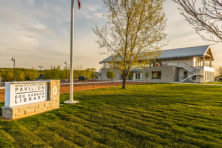Playing With Numbers: Putting the annual tourism expenditure report in proper context
- Share
- Tweet
- Pin
- Share
When the Door County Visitor Bureau (DCVB) announced the annual report on tourism expenditures last month, the numbers shocked many around the county.
The report showed an 18 percent increase in expenditures from 2007 to 2008. Not surprisingly, many business owners said they didn’t buy the numbers. “I certainly didn’t see an 18 percent increase,” most said.
In a year that saw a weak spring and an economic collapse in the fall, many owners of prominent businesses reported slight declines. Others said they felt fortunate to hold the bar.
So the logical question is how Davidson-Peterson Associates, the firm that has performed the study for the Wisconsin Department of Tourism (WDT) since 1989, came to their numbers.
Many assume that the numbers based in part on tax return data, such as sales tax or a breakout of sales tax paid by lodging or attraction businesses. David Scheler, the WDT’s research coordinator, said that’s not the case. In fact, the number is derived from a survey conducted by Davidson-Peterson.
The survey includes about 2,000 face-to-face interviews with travelers around the state traveling “outside their normal routine.” Questions focus on money spent and activities participated in during the last 24 hours.
It also includes about 3,000 phone interviews with lodging properties statewide, and another 1,000 phone interviews with Wisconsin households that hosted traveling family and friends.
Statistics are analyzed, averaged, and applied to counties using economic modeling to come up with numbers for each county.
Most of these calls are made in urban areas like Green Bay, Madison, Milwaukee, and Wisconsin Dells, Scheler said. This means the Door County numbers are largely based on surveys of people visiting destinations significantly different than the Door Peninsula. It stands to reason that those people likely have different spending habits as well.
Last year, that survey pegged tourism-related expenditures in Door County at $404 million. For 2008, the DCVB asked the firm for better numbers, paying $7,200 for a Door County-specific study.
In return the firm contacted every Door County lodging establishment (as listed by the State Department of Public Health, meaning most private rentals were not contacted), and said it got a good response (it would not release details).
“In previous years we did not conduct a specific study for the area,” said Marcia Wood, Davidson-Peterson research director. “It was definitely not as precise. This one included more in-depth interviews and made an attempt to contact every lodging entity.”
The firm took the information gathered from those surveys and applied it to the same economic modeling it used for statewide calculations.
In the end, did this produce a better number and a more accurate gauge of tourism spending in Door County? Probably. Is it a useful number to compare to previous year totals? Not at all.
Jack Moneypenny, President and CEO of the DCVB, said the county almost certainly did not see an 18 percent increase in spending.
“What the study represents is an 18 percent increase in reporting and accuracy,” he said. “It creates a new benchmark for us to measure the industry by.”
Moneypenny said the Visitor Bureau will ask for the county-specific study each year from now on so it can compare apples to apples.
So how should business owners measure the health of the tourism industry on the peninsula?
Unfortunately, the best tool available doesn’t have much history. When the county collects room tax, it compiles a monthly report that includes not just collection totals, but occupancy rates, room nights filled, total room nights available, and the average daily rate paid for rooms.
This information gives businesses a glimpse not only of how full lodging establishments are, but whether innkeepers are discounting rates en mass to draw guests. Since the numbers are derived monthly, it also provides a very accurate look at when people are coming here and when they’re willing to pay more.
“Room tax is our best measure,” Moneypenny said, “but we can’t negate that [the Peterson-Davidson] study is the one that the state uses.”
The DCVB asked Davidson-Peterson to incorporate room tax information into its report, but the firm declined because it would be inconsistent with other surveys throughout the state.
Still, DCVB board chairman Dave Eliot said the study is useful.
“To compare ourselves to how other tourism communities throughout the state are doing, we have to use their study,” he said. “I think an important part of what we do is getting the state to promote our brand, and where we rank in the state demonstrates our importance to tourism.”
So did Door County tourism increase 18 percent last year? No. Most likely, it held close to steady, judging from an informal survey of about 25 prominent businesses and a review of Door County Tourism Zone room tax collections.
Room tax numbers show occupancy rates rose slightly in May, July, and August, but dipped slightly in June, November and December. Occupancy rates fell more dramatically in September (5.41 percent) and October (4.9 percent). Those numbers mesh much better with the anecdotal evidence reported by innkeepers, restaurateurs, and retailers, and are a better indicator of tourism trends in the county.


